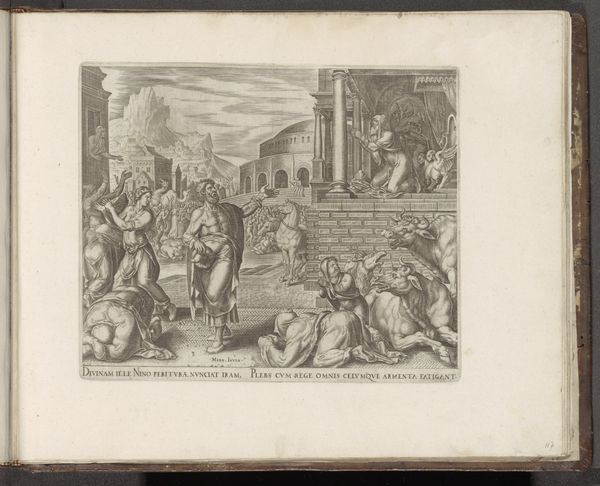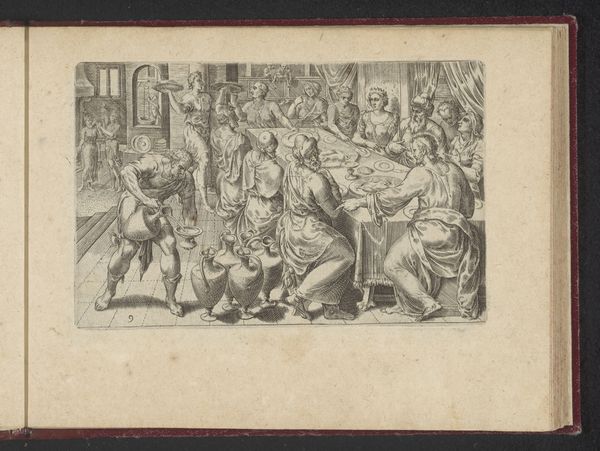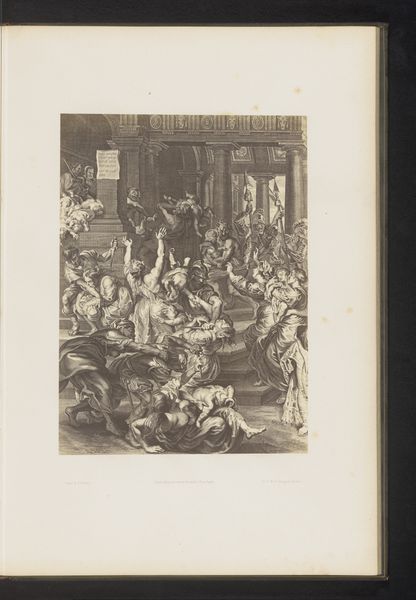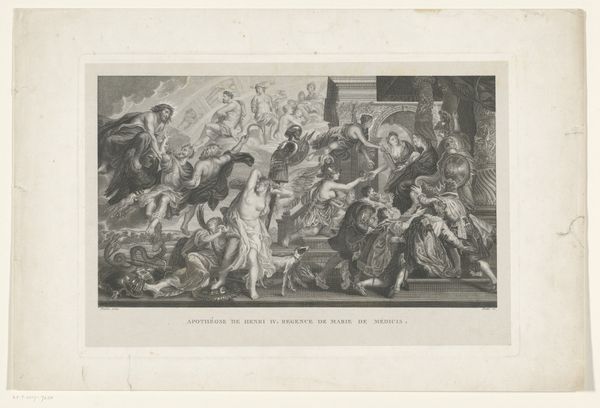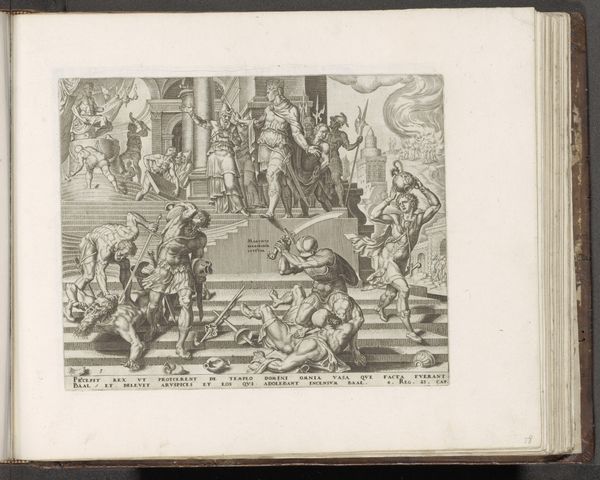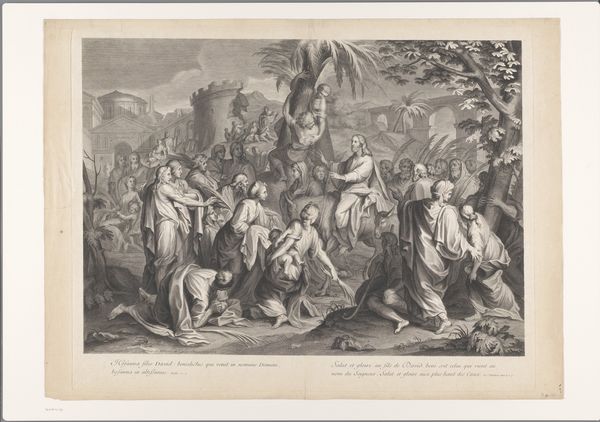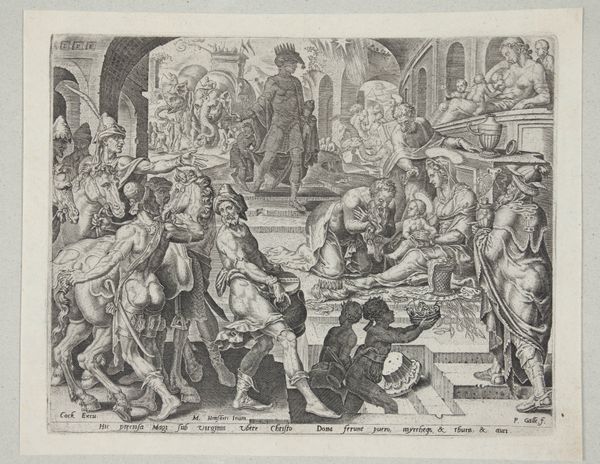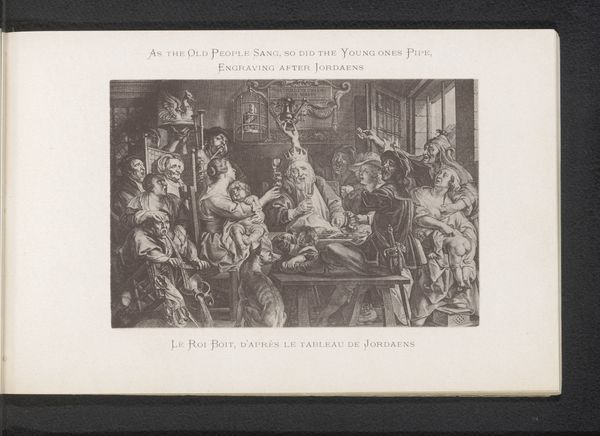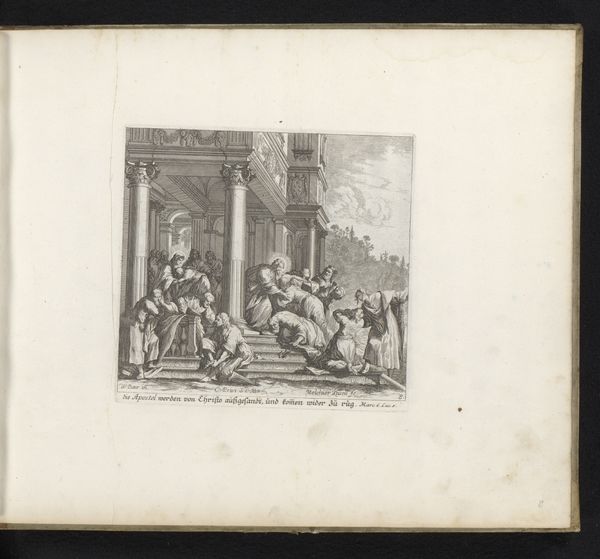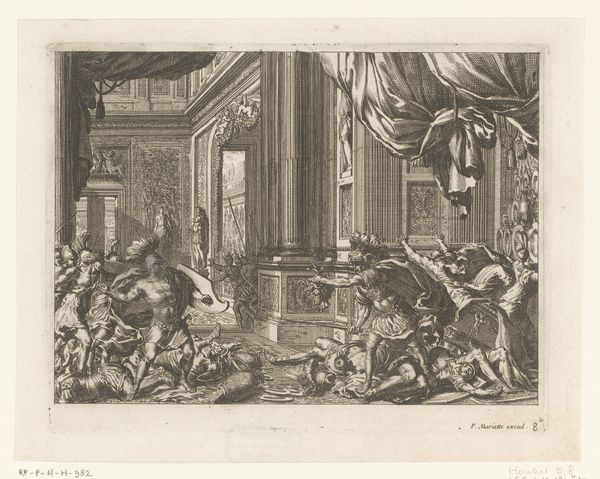
Reproductie van een prent met voorstelling van de Sabijnse maagdenroof before 1897
0:00
0:00
Dimensions: height 121 mm, width 164 mm
Copyright: Rijks Museum: Open Domain
Curator: Here we have an intriguing reproductive print from before 1897, housed here at the Rijksmuseum. The piece is called "Reproductie van een prent met voorstelling van de Sabijnse maagdenroof"—"Reproduction of a print depicting the Rape of the Sabine Women". It employs engraving, etching and lithographic techniques on what appears to be aged paper. Editor: My immediate impression is one of controlled chaos. Despite being rendered in monochrome, there's a palpable sense of dynamism. The lines are intricate, almost obsessively so, creating a densely packed composition. Curator: Indeed, the original subject matter, the abduction of the Sabine women, speaks volumes about power, conquest, and the construction of early Roman society. This narrative has been depicted across art history and invites interrogation through a feminist lens, considering the silencing and objectification of women. Editor: Structurally, the artist masterfully uses line to create depth and to differentiate textures, especially within the clothing and musculature of the figures. There is an interplay between light and shadow which helps accentuate the dramatic tension, wouldn't you agree? Curator: Absolutely, and considering that this is a reproduction, it carries its own complex history. What purpose did these reproductions serve? Who was the intended audience? How did it impact the perception and dissemination of historical narratives at the time? It’s worth noting how interpretations of this historical event has shifted significantly over the centuries, impacting its socio-political resonance. Editor: Semiotically, one can see the exaggerated gestures, the frantic movement, and the clashing of bodies functioning as signifiers of conflict and terror. Yet, by existing as a reproductive print, a signifier for a famous master, it operates on several levels. Curator: Yes, to decode the image through art history and contemporary social theory unveils the complexities of power, gender and historical representation, especially around conflicts, making the artist’s choices not just formal ones, but ethical ones, whether deliberate or unconsciously inscribed into their visual vocabulary. Editor: It all serves to highlight the piece's dramatic intensity—a masterful orchestration of visual elements which invite deeper engagement. It encourages you to unravel the narrative, consider its compositional choices, and acknowledge the skills of its creator. Curator: Agreed. Ultimately, it’s a compelling piece that continues to spark debate about art's role in reinforcing—or challenging— societal narratives.
Comments
No comments
Be the first to comment and join the conversation on the ultimate creative platform.


